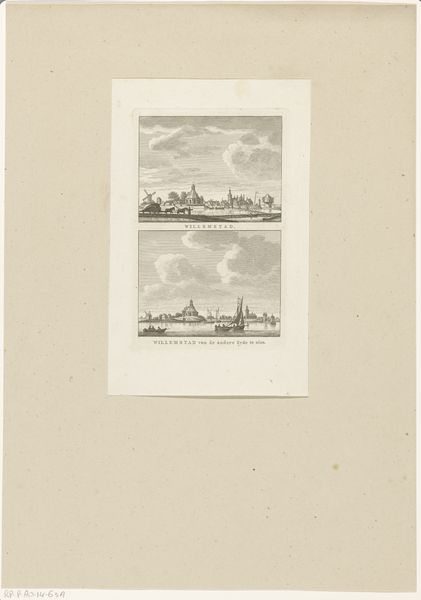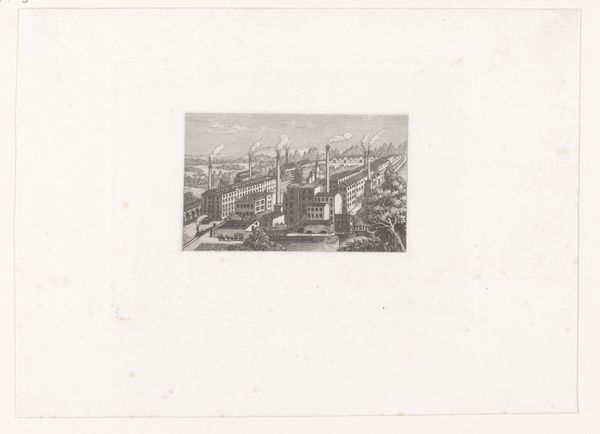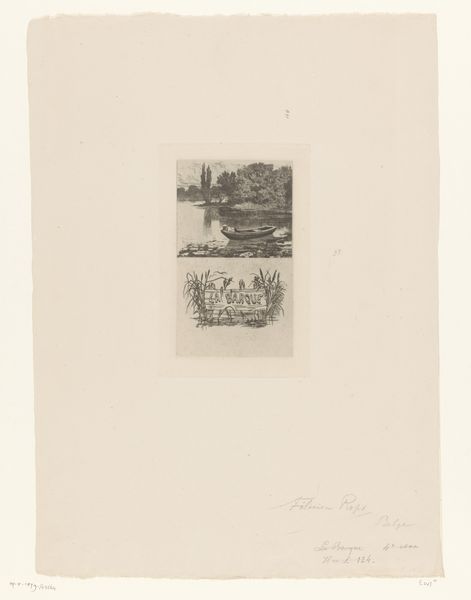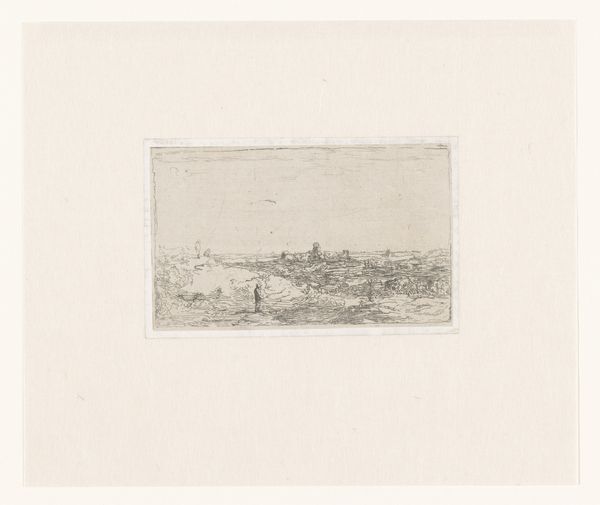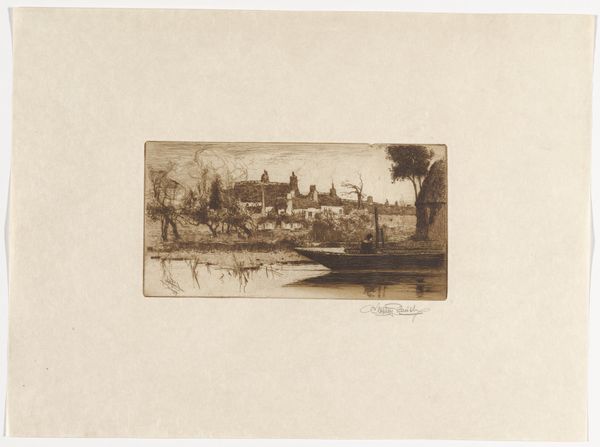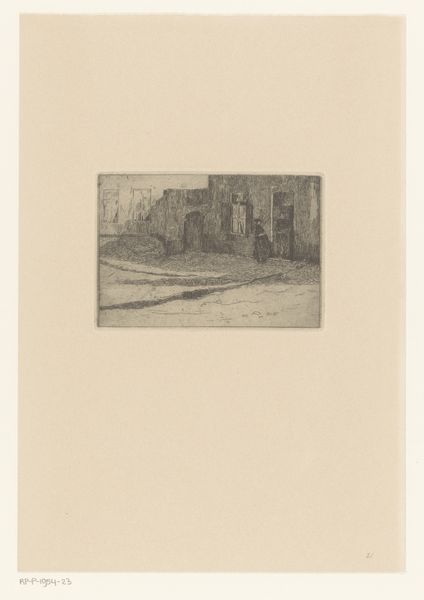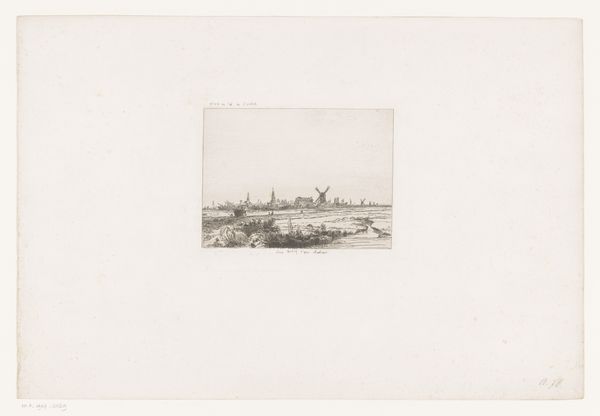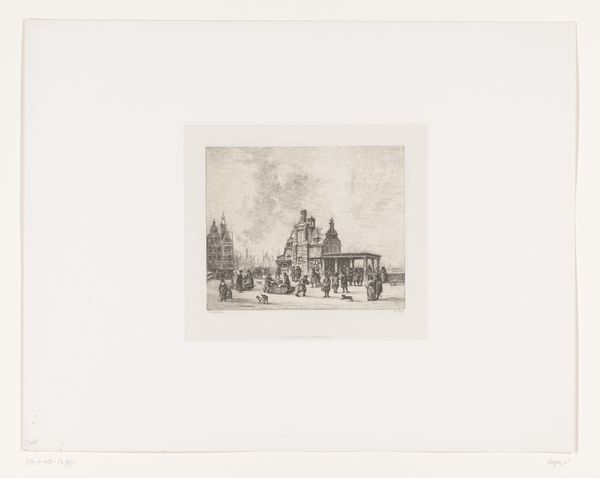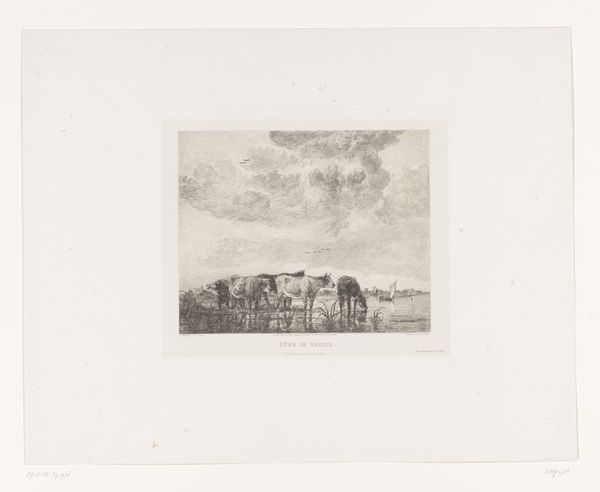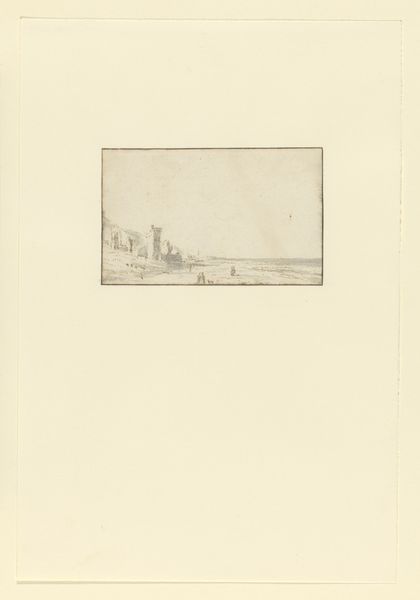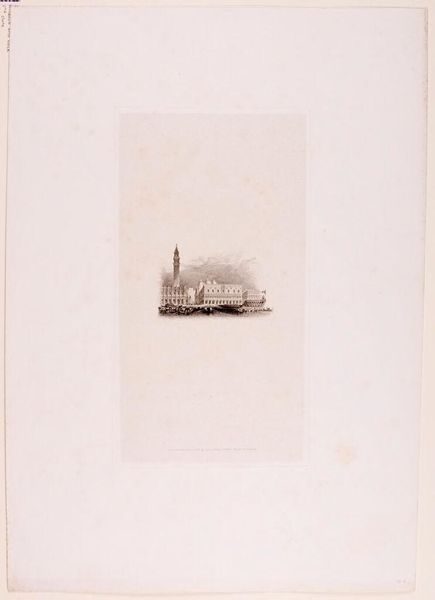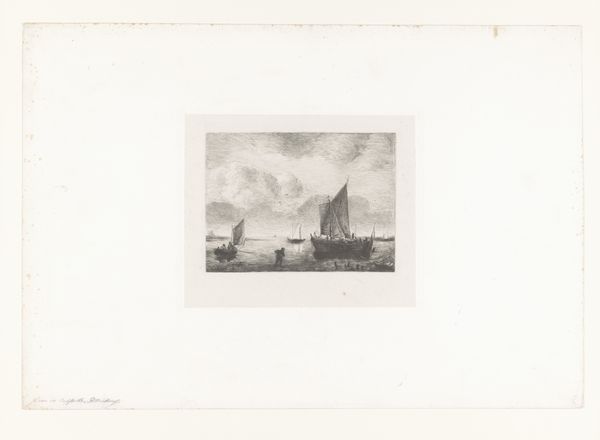
drawing, print, etching, architecture
#
drawing
# print
#
etching
#
cityscape
#
architecture
#
realism
Dimensions: height 115 mm, width 180 mm, height 440 mm, width 360 mm
Copyright: Rijks Museum: Open Domain
Curator: Here we have Carel Jozeph Grips’ “Heilige Agathakerk in Cuijk,” dating from sometime between 1835 and 1920. The work is an etching on, I assume, paper. Editor: It strikes me as quite delicate. There's a sense of airy openness to the architectural rendering, despite the rigidity one typically associates with architectural depictions. The light etching work makes it look almost like a pencil drawing. Curator: Absolutely. Grips was clearly working within a tradition of topographical art—art intended to document specific locations, and to elevate the urban centers but more often, in his body of work, the rural settings of the Netherlands. Editor: The composition feels deliberate. The way the artist utilizes line to create depth—look at how he suggests detail without overwhelming the image with heavy strokes! It’s fascinating how little ink creates such an inviting space. Curator: Indeed, the artist’s choice to depict the Agathakerk is really insightful if we consider Cuijk’s history. In the late 19th and early 20th centuries, Dutch Catholicism was experiencing a significant revival and a growing institutional authority. Editor: Do you see any hints of that revival in the art itself? The formal choices reflecting anything beyond documentation? Curator: Certainly. It subtly reflects a sense of stability and establishment during a period of cultural solidification. This art visually confirms not just its place, but the church’s lasting legacy in the community. Editor: That tension—the almost radical simplicity alongside the historical weight it represents. That’s quite a dichotomy to capture with such an economy of means. Curator: It gives us something to reflect on; it brings this institution’s importance and purpose to a clear but subtle picture. Editor: Well, I know that I won’t just look at churches the same way ever again. There is much more to them, culturally and visually.
Comments
No comments
Be the first to comment and join the conversation on the ultimate creative platform.
